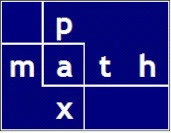Scientific American Article
Read the eye-opening story of Christopher Havens
Excerpts
"An intro … Well, I’m Christopher Havens, a mathematician, a prisoner and the director of the Prison Mathematics Project.
…
Without going too deep into my story, I lived a pretty dark past, landed in prison and I ended up finding mathematics.
…
I research in number theory in my free time, and recently had my second paper accepted for publication at a professional journal. Another was recently submitted and more on the way.
…
But my real work lies in a huge effort to understanding the role of mathematics in self identity and desistance from crime.
…
I was in the hole, which is another word for solitary confinement. Picture living in a small concrete room where an incredibly bright fluorescent light stays on the entire time. Time has no meaning with no windows to the outside, and no remarkable features to mark the passage of time. In fact, there were no remarkable features anywhere … even the bed is made from a simple concrete slab. Adding to the atmosphere were the screams of prisoners whose minds were … less than healthy. Some spend hours entertaining themselves by taunting and trying to make others crack under the pressure. No human being is visible from inside the cells in the hole — save for the silhouette of a face on the other side of a narrow window — and so there are men who would kick the walls, sometimes for several hours at a time.
I like to define hell as being the n’th layer of rock bottom as n increases without bounds … Sometimes it felt like on the other side of that concrete wall, I would reach that infinite limit.
…
It was funny … I stood there and I looked at that plain concrete wall — meant as the security against me — and I saw it as a blank slate … I decided right there that with 25 years of my life, I could choose to embrace mathematics and completely rebuild myself. I remember thinking, “With 25 years, I could become a mathematician.”
…
From researching with my colleagues in Italy, I learned the importance of LaTeX. In fact, I hired a guy to write my LaTeX for me and as I sent him the material, I would read about LaTeX on the side. I built some basic skills of the syntax, but I couldn’t compile it yet, and I didn’t even know how to set up a document.
About a year and a half ago I took a web development course and had the use of an offline laptop for several months, and well, three months before returning the computer I sweet talked the teacher into giving me a LaTeX compiler. Here’s where I learned how to really write and visualize it in my mind, but just as I started getting the hang of it, I had to turn the computer in. So now I will spend the remaining time in my sentence with no computer. That was a blow.. I decided right there to do all my math in LaTeX so that I can improve even without a computer. This is a vital tool for mathematicians, so I bought Grätzer’s “More Math Into LaTeX”, and I study it as I work. When all of the math I do gets done this way, I tend to find ways to improve all the time.
So while I can’t see the PDF version of what I type, I know what it’s supposed to look like, and as I send it to my colleague in Hannover, he sends me critique and a compiled PDF.
…
I can now also program using JavaScript or Python using a simulated console. This is absolutely not possible without a computer … UNLESS, one were to go through the huge effort of having somebody develop some software that could detect whether a Jpay message contained programming or not, and then copy said programming from a Jpay message, make any global changes as necessary, and then paste the programming into the appropriate compiler. After the program is executed, it’s copied out from the computer’s console and pasted back into a Jpay message headed right back at me. So the whole process is automated. This is, in fact, how I learned Python.
…
Now, any prisoner with a common prison messaging service like Jpay or Corrlinks can learn Python, R and even JavaScript through a type of email. Our software simulates a console so that when a prisoner sends our organization their code, it is then recognized and compiled. The result is sent back and they receive it as a type of email. Clearly this is not as fast as having a computer in your lap, but I learned Python on this system completely, and it’s a game changer."
Excerpts are from an interview with Wong Tian An
November 2022
Scientific American Article
Havens — Continued Fractions
The Paper — Linear fractional transformations and nonlinear leaping
convergents of some continued fractions
Christopher Havens, Stefano Barbero, Umberto Cerruti, Nadir Murru
Department of Mathematics, University of Turin
Via Carlo Alberto 10, 10123, Torino, Italy

